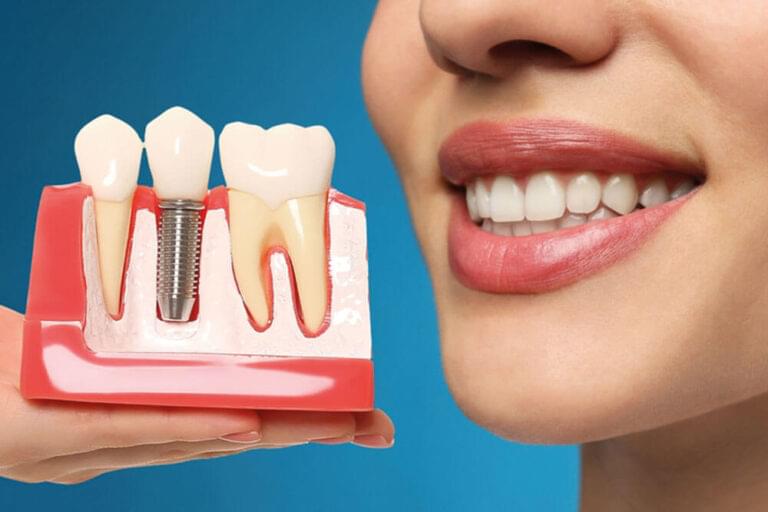For many individuals aged 65 and older, dental implants offer a promising solution to regain both function and confidence in their smile. However, the process of getting dental implants isn’t always as straightforward as it seems. One common step that surprises many patients is the need for bone grafting for dental implants. If someone has told you that you might need a bone graft for your dental implants, you may be wondering what it is and why it’s necessary.
For those who have trouble eating, worry about costs, or want to maintain their health, bone grafting helps. Understanding its importance can make the process less daunting. Let’s explore why dental professionals sometimes require bone grafting for implants and how it can impact your overall treatment plan.
What is Bone Grafting?
A bone graft adds new material to your jawbone to strengthen it. This is often necessary when a patient’s natural bone is not thick enough or strong enough to support a dental implant. The graft can be sourced from various places, including your own body, synthetic materials, or even donor sources. Over time, the graft fuses with your natural bone, creating a stable foundation for the implant.
Why is Bone Grafting Necessary for Dental Implants?
The success of a dental implant depends largely on its ability to fuse securely with your jawbone. This process, called osseointegration, allows the implant to function like a natural tooth root. However, if your jawbone has deteriorated or lacks density, the implant won’t have enough support to stay in place long-term.
Bone loss can occur for several reasons, including:
- Tooth Loss: When you lose a tooth, the bone in that area can begin to resorb, or shrink, over time. Without the stimulation of a tooth root, the bone in that area weakens.
- Gum Disease: Periodontal disease can significantly destroy bone around your teeth, making it harder to place implants.
- Age: As you get older, natural bone density can decline, particularly if you’ve been missing teeth for a while.
For individuals with healthy-looking teeth but trouble eating or concerns about long-term dental health, bone grafting helps. It ensures the implant procedure is successful.
When is Bone Grafting Necessary?
Not everyone who gets dental implants will need bone grafting, but for many individuals aged 65 and over, it can become a crucial step. Here are some situations where bone grafting for dental implants may be required:
- Significant Bone Loss Due to Tooth Loss If you’ve been missing teeth for years, you may have experienced bone resorption. Without tooth stimulation, the bone shrinks and may not support an implant. In these cases, a bone graft helps restore the bone structure.
- Advanced Periodontal Disease Gum disease is a major cause of tooth loss and bone degradation. If you’ve suffered from periodontal disease in the past, your jawbone may be weakened. Bone grafting helps build back this structure, providing the necessary foundation for an implant.
- Insufficient Bone Density Even without losing teeth, some people naturally have lower bone density, especially as they age. Thin or weakened bones may need a graft to support an implant.
- Preparing for All-on-4 Dental Implants If you’re considering All-on-4 implants, your bone density is crucial. Dentists place implants in specific areas and may use bone grafting to strengthen them.
What to Expect During a Bone Grafting Procedure
The bone grafting procedure can sound intimidating, but it’s relatively straightforward. The graft material can come from a variety of sources, depending on what you and your dentist decide is best for your situation. Here are the common types of bone grafts:
- Autograft: Bone is taken from another part of your body, such as your chin, hip, or another area in your mouth.
- Allograft: Bone from a donor source is used.
- Xenograft: Bone from an animal source, typically bovine, is used.
- Synthetic Bone Grafts: Synthetic materials that mimic bone are often used for patients who prefer not to use organic sources.
Once the graft is in place, it will take time to heal. During this period, the graft material integrates with your natural bone, making it thicker and stronger. Healing time can range from a few months to nearly a year before placing the dental implant, depending on the graft’s extent.
Bone Grafting from a Health Perspective
For those who are looking at dental implants from a health perspective, bone grafting plays a crucial role in maintaining the integrity of your jawbone and overall dental health. Losing bone density can have a snowball effect, leading to facial sagging, misaligned teeth, and even difficulties in speaking and chewing.
By undergoing a bone graft, you’re taking a proactive step in preserving the structure of your face and jaw, which can help keep you looking and feeling healthy for years to come.
Avoiding Dentures
If you’re in the group that finds dentures undesirable, either for their appearance, maintenance requirements, or the discomfort they can cause, dental implants are the best alternative. Bone grafting, while it adds an extra step, is often a necessary one to ensure your implants have the foundation they need for long-term success.
Dentures cost less upfront but often require replacement, and many people find them cumbersome. Dental implants, by contrast, can offer a more natural, permanent solution to restoring your smile without the downsides of traditional dentures.
Final Thoughts
Bone grafting for dental implants can seem like a complicated process, but it’s an essential part of preparing for dental implants in many cases. For those aged 65+ who are concerned about their ability to eat comfortably, maintain good dental health, and avoid the hassle of dentures, bone grafting offers a way to rebuild the jawbone and ensure the success of the implant.
Though the initial cost might feel daunting, the long-term benefits of bone grafting for dental implants—such as maintaining your facial structure, preventing further bone loss, and ensuring a lasting smile—make it a worthwhile investment. Always consult with your dentist about your specific needs and health considerations, and explore the options that make the most sense for you.










